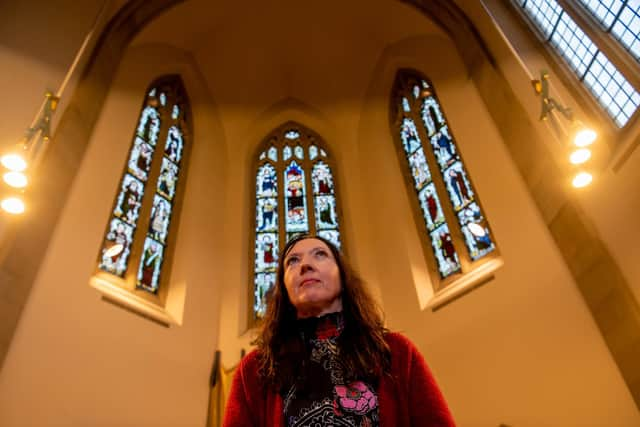Advent with a difference: Yorkshire cathedrals encourage locals to experience the history on their doorstep
And the treasures of one of Yorkshire’s cathedrals are under the spotlight for a new campaign to encourage visitors to explore the riches on their doorstep.
Bradford Cathedral’s early Morris & Co. windows are just some of the 50 remarkable artefacts cared for and preserved by cathedrals in England and Wales that will feature in a special advent social media campaign by the Association of English Cathedrals (ACE).
Advertisement
Hide AdAdvertisement
Hide AdAs well as the windows, which were overseen by William Morris and date from the 1860s, other remarkable artefacts which will be included as part of the campaign include an Anglo Saxon portable sundial, the Magna Carta, a pair of 15th century pilgrim boots, a pre-Raphaelite painted altarpiece and the first Bible in the Welsh Language.


Each treasure will be “revealed” by the AEC on their social media channels on a different day leading up to Christmas – with the Morris and Co windows being today’s offering.
The AEC’s #CathedralTreasures campaign for Advent and Christmas is based on the latest volume by Janet Gough, OBE, author, lecturer and advisor on historic churches and cathedrals, which tells the story of the treasures from 44 Church of England cathedrals and six cathedrals from the Church in Wales.
The Dean of St Albans, the Very Revd Jo Kelly-Moore, who chairs the AEC said: “We are blessed with an abundance of treasures in our cathedrals. These are a vital part of our heritage and an integral part of our culture, our social history and our identity.
Advertisement
Hide AdAdvertisement
Hide Ad"In their diversity ultimately each of them is a symbol of what our Cathedrals stand for, to proclaim the glory of God and God’s love for all creation.”
The hidden symbolism of the Morris and Co windows has previously been unveiled by the Cathedral.
William Morris was best known for his decorative prints which still prove popular to this day.
Taking inspiration from nature, they usually featured repeating patterns incorporating flora and fauna.
Advertisement
Hide AdAdvertisement
Hide AdThe windows take inspiration from one of Morris’ favourite books from the 16th century – and include the three things he said were essential for design: beauty, imagination and order.
The East window also contains work by Pre Raphaelite Brotherhood founder Dante Gabriel Rossetti, and the altar cloth was also designed by Morris and Co.
A spokesperson for the cathedral said: “Like many other designers of the Victorian period, Morris looked to the past and particularly the medieval period as can be seen in the designs and method.
"After the harsh effects of industrialisation, there was a sense of harking back to rural traditions and a simpler time.”